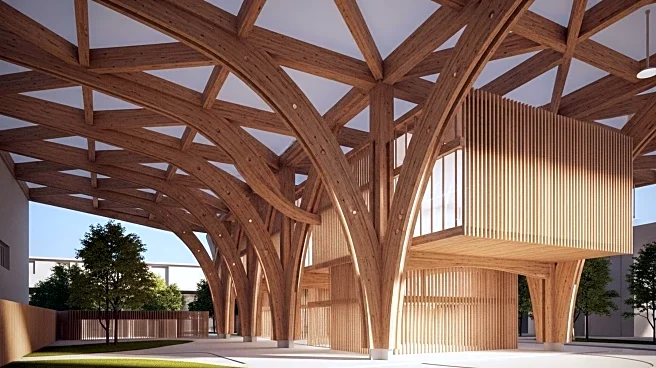What is the story about?
What's Happening?
The University of Arkansas in Fayetteville has unveiled a new research facility that prominently features mass timber in its design. The facility aims to foster interdisciplinary collaboration through expansive spaces that address challenges such as human health protection and the food-energy-water nexus. The building combines advanced laboratories with collaborative areas, encouraging interaction among researchers. A central staircase serves as a focal point for movement and interaction, while the layout maximizes daylight and campus views. The design integrates a high-performance steel lab bar with a mass timber pavilion, reflecting Arkansas' material heritage and projecting a forward-looking identity.
Why It's Important?
The use of mass timber in the University of Arkansas' research facility highlights a growing trend in sustainable architecture and construction. Mass timber offers environmental benefits, including reduced carbon footprint and improved energy efficiency. The facility's design promotes collaboration and innovation, which are essential for addressing complex global challenges. By integrating health strategies and ecosystems, the facility supports a holistic approach to research, potentially leading to breakthroughs in various fields. The strategic location enhances engagement with local industries, fostering partnerships and economic growth in the region.
Beyond the Headlines
The incorporation of mass timber in the facility's design reflects a broader shift towards sustainable building practices. This approach not only reduces environmental impact but also supports the local timber industry, contributing to economic development. The facility's emphasis on interdisciplinary collaboration may lead to new research methodologies and innovations, influencing academic and industry standards. The focus on health and sustainability aligns with global efforts to address climate change and resource management, positioning the University of Arkansas as a leader in sustainable research and development.
AI Generated Content
Do you find this article useful?














